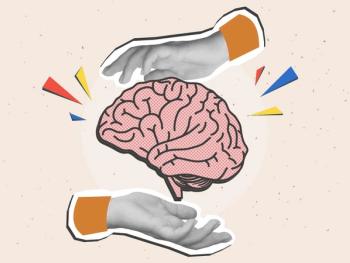
- Psychiatric Times Vol 19 No 1
- Volume 19
- Issue 1
Depression in Adults With Diabetes
Diabetes doubles the likelihood of comorbid depression, which impairs functioning and quality of life. This mood disorder has a unique importance in diabetes because of its associations with treatment noncompliance, insulin resistance, hyperglycemia and an increased risk for diabetes complications.
Patients with diabetes are twice as likely to experience depression as those without diabetes (Anderson et al., 2001). The odds of depression are similar in type 1 and
Etiology
The exact cause of depression in patients with diabetes is unknown, but it is likely complex, involving interactions among psychological, physical and genetic factors. Diabetes is a challenging illness, and coping with the disease and its complications (such as loss of vision or sexual capacity) is difficult and may contribute to depression. While the clinical sentiment that depression is merely secondary to diabetes (i.e., "you'd be depressed, too, if you were this sick") is evident in some cases, this hypothesis insufficiently accounts for most cases of depression. The contribution of psychosocial factors to the initial
Last, it is possible that the
Effects on Health
No matter what causes the co-occurrence of depression and diabetes, when they are both present, interactions at behavioral and physiologic levels are likely. Glucose dysregulation, depression, substance abuse, smoking, noncompliance, physical activity and weight gain all affect one another, and depression is related to all of the factors listed. There is evidence supporting all of these associations. In both cross-sectional and prospective studies, depression has been associated with poor glycemic control, the principle cause of diabetes complications (Lustman et al., 2000a). The average increase in glycosylated hemoglobin attributable to depression in these studies was approximately 1.0%, a clinically significant elevation (Lustman et al., 2000b). Depression is also associated with other factors related to poor glycemic control, such as physical inactivity, obesity and treatment noncompliance, which are all factors that could contribute to insulin resistance (Farmer et al., 1988; Frederick et al., 1988; Littlefield et al., 1992; Lustman et al., 1992).
Given depression's effects on glycemic control, it is not surprising that it is linked to the risk of diabetes complications. In a recent meta-analysis, depression was significantly associated with an increased risk for the occurrence of neuropathy, nephropathy, retinopathy and macrovascular disease in adults with diabetes (range of effect sizes (r)=0.17 to 0.32, p<0.05 for all) (de Groot et al., 2001). Prospective studies have found that depression accelerates the presentation of coronary heart disease in women with diabetes (Lloyd et al., 1997).
Depression influences perceptual processes and is thought to make people less tolerant of pain and physical symptoms. For example, neuropathic pain that would normally be only an occasional annoyance may feel constant and overwhelming during an episode of depression and can result in a visit to the doctor. Mood at the time of clinical evaluation is often a stronger predictor of symptoms than the biomedical markers that are presumed to cause these symptoms. In this manner, depression may influence the presentation of physical symptoms.
Recognition
According to the DSM-IV, the diagnosis of depressive disorder is assigned when five or more criterion symptoms occur, are severe and persist over a period of at least two weeks. Sad mood or a significant loss of interest or pleasure are the essential symptoms for the diagnosis, and one of them must be present along with at least four other criterion symptoms. Symptoms attributable to the medical condition cannot count toward the diagnosis. This rule discourages overdiagnosis of depression, which is important since hypo- and hyperglycemia may produce some of the symptoms of depression (e.g., fatigue, weight loss). Diabetes does not, however, directly produce the two sin qua non symptoms of depression (sadness and loss of interest or pleasure), thus reducing the likelihood of false-positive depression diagnoses.
Despite substantial evidence of its adverse effects on the presentation and course of diabetes, and new evidence that treatment of depression has therapeutic effects on both mood and diabetes (see treatment section), major depression is recognized and treated in only about one-third of cases (Lustman et al., 1997a). This situation has been blamed on a variety of factors, including the presumption by clinicians that depression is merely a secondary reaction to the medical illness, the view (often shared by patients and family members) that the diagnosis conveys additional burden, and the stigma attached to having a mental illness. Primary care physicians may also lack sufficient training and face financial disincentives to perform psychodiagnostic testing. The fact that the average physician-patient interaction in the United States is currently eight to 12 minutes long (Kathol R, personal communication, May, 1996) also contributes to poor depression recognition. Despite these rather formidable obstacles, simple and effective methods are available to readily identify those patients most likely to benefit from depression treatment. These include simple paper-and-pencil screening instruments, like the 21-item Beck Depression Inventory (BDI), which are self-administered and take under 10 minutes to complete. When used in the physician's office, these tests are accurate and sensitive for the detection of depression.
Treatment
Patients meeting the criteria for major depressive disorder are the most obvious candidates for treatment. A therapeutic trial may also benefit those patients with persistent depression symptoms that fall short of these criteria but, nevertheless, are associated with sustained impairments in function. Some patients or professionals have a preference for either psychotherapy or antidepressant medication; others may desire a combined approach. Consideration of the individual's symptom picture may provide a basis for treatment selection; the treatment of choice for depression dominated by somatic symptoms might be medication, whereas psychotherapy would be more effective for depression characterized by existential difficulties.
The presence of diabetes and its myriad physical complications can make the selection of depression treatment even more difficult. Conventional tricyclic antidepressants have long been used in primary care and have proved beneficial in regulating sleep. However, the potential for weight gain, anticholinergic side effects, orthostatic hypotension and other adverse cardiovascular side effects can be harmful for patients with diabetes. Furthermore, one study showed that TCAs may worsen glycemic control in patients with diabetes (Lustman et al., 1997b). These researchers found that although nortriptyline (Aventyl, Pamelor) was effective in treating depression, it had an adverse hyperglycemic effect that was unrelated to the medication's effect on weight.
Selective serotonin reuptake inhibitors and other newer antidepressants do not seem to cause hyperglycemia in patients with diabetes. These agents may in fact improve glycemic control, as was demonstrated in a recent trial using fluoxetine (Prozac) (Lustman et al., 2000b). The SSRIs are as effective as TCAs in treating depression but have less problems with weight gain and sedation as side effects. Side effects like sexual dysfunction, gastrointestinal distress and agitation are common and must also be considered, however.
Psychotherapy offers a unique alternative to medication; it has shown to be effective in treating depression, in addition to improving glycemic control, in patients with diabetes (Lustman et al., 1998).
Conclusion
Depression is a prevalent and recurrent condition among patients with either type 1 or type 2 diabetes. This psychiatric disorder complicates the medical disease by promoting poor glycemic control and increasing the risk of diabetes complications. Treatment of depression has significant favorable effects on mood and quality of life, as well as beneficial effects on glycemic control. The presence of diabetes complications or hyperglycemia decreases the likelihood of recovery during depression treatment and increases the probability of recurrence following treatment. Optimal treatment of depression in patients with diabetes may require a comprehensive approach that couples specific depression treatment with focused efforts to improve glycemic control.
Acknowledgement
Dr. Lustman's research on diabetes and depression was supported in part by grants DK36452 and DK53060 from the National Institutes of Health.
Dr. Lustman is professor of medical psychology in the department of psychiatry at Washington University in St. Louis School of Medicine and is recognized for his research on the interaction of psychiatric illness and diabetes. He serves on the editorial board of Clinical Diabetes and the grant review panel of the American Diabetes Association.
Mr. Anderson is clinical research associate in the department of psychiatry at Washington University in St. Louis School of Medicine.
References:
References
>
1.
Anderson RJ, Freedland KE, Clouse RE, Lustman PJ (2001), The prevalence of comorbid depression in adults with diabetes: a meta-analysis. Diabetes Care 24(6):1069-1078.
2.
de Groot M, Anderson R, Freedland KE et al. (2001), Association of depression and diabetes complications: a meta-analysis. Psychosom Med 63(4):619-630.
3.
Eaton WW, Armenian H, Gallo J et al. (1996), Depression and risk for onset of type II diabetes. A prospective population-based study. Diabetes Care 19(10):1097-1102.
4.
Farmer ME, Locke BZ, Moscicki EK et al. (1988), Physical activity and depressive symptoms: the NHANES I Epidemiologic Follow-Up Study. Am J Epidemiol 128(6):1340-1351.
5.
Frederick T, Frerichs RR, Clark VA (1988), Personal health habits and symptoms of depression at the community level. Prev Med 17(2):173-182.
6.
Kawakami N, Takatsuka N, Shimizu H, Ishibashi H (1999), Depressive symptoms and occurrence of type 2 diabetes among Japanese men. Diabetes Care 22(7):1071-1076.
7.
Littlefield CH, Craven JL, Rodin GM et al. (1992), Relationship of self-efficacy and binging to adherence to diabetes regimen among adolescents. Diabetes Care 15(1):90-94.
8.
Lloyd CE, Wilson RR, Forrest K (1997), Prior depressive symptoms and the onset of coronary heart disease. Diabetes Care 46(1):13A.
9.
Lustman PJ, Anderson RJ, Freedland KE et al. (2000a), Depression and poor glycemic control: a meta-analytic review of the literature. Diabetes Care 23(7):934-942.
10.
Lustman PJ, Clouse RE, Carney RM, Griffith LS (1987), Characteristics of depression in adults with diabetes. Proceedings from NIMH conference on mental disorders in general health care settings. Seattle.
11.
Lustman PJ, Freedland KE, Griffith LS, Clouse RE (2000b), Fluoxetine for depression in diabetes: a randomized, double-blind, placebo-controlled trial. Diabetes Care 23(5):618-623.
12.
Lustman PJ, Griffith LS, Clouse RE (1997a), Depression in adults with diabetes. Semin Clin Neuropsychiatry 2(1):15-23.
13.
Lustman PJ, Griffith LS, Clouse RE et al. (1997b), Effects of nortriptyline on depression and glycemic control in diabetes: results of a double-blind, placebo-controlled trial. Psychosom Med 59:241-250.
14.
Lustman PJ, Griffith LS, Freedland KE, Clouse RE (1997c), The course of major depression in diabetes. Gen Hosp Psychiatry 19(2):138-143.
15.
Lustman PJ, Griffith LS, Freedland KE et al. (1998), Cognitive behavior therapy for depression in type 2 diabetes mellitus: a randomized, controlled trial. Ann Intern Med 129(8):613-621.
16.
Lustman PJ, Griffith LS, Gavard JA, Clouse RE (1992), Depression in adults with diabetes. Diabetes Care 15(11):1631-1639 [see comment].
17.
MacKenzie RG, Trulson ME (1978), Effects of insulin and streptozotocin-induced diabetes on brain tryptophan and serotonin metabolism in rats. J Neurochem 30(1):205-211.
18.
Nathan RS, Sachar EJ, Asnis GM et al. (1981), Relative insulin insensitivity and cortisol secretion in depressed patients. Psychiatry Res 4(3):291-300.
19.
Popkin MK, Callies AL, Lentz RD et al. (1988), Prevalence of major depression, simple phobia, and other psychiatric disorders in patients with long-standing type I diabetes mellitus. Arch Gen Psychiatry 45(1):64-68.
20.
Trulson ME, Himmel CD (1985), Effects of insulin and streptozotocin-induced diabetes on brain norepinephrine metabolism in rats. J Neurochem 44(6):1873-1876.
21.
Wright JH, Jacisin JJ, Radin NS, Bell RA (1978), Glucose metabolism in unipolar depression. Br J Psychiatry 132:386-393.
Articles in this issue
almost 24 years ago
Lay Down Sallyalmost 24 years ago
Revealing Medical Licensure and Discipline Information on the Webalmost 24 years ago
Detox Diagnosis--Keeping Medicine in Psychiatryalmost 24 years ago
The Year Neurology Almost Took Over Psychiatryalmost 24 years ago
The Complex Interrelationship of Lithium and the Thyroidalmost 24 years ago
Where Psyche Meets Soma in Asthmaalmost 24 years ago
Detox Diagnostics -- Keeping Medicine in PsychiatryNewsletter
Receive trusted psychiatric news, expert analysis, and clinical insights — subscribe today to support your practice and your patients.














